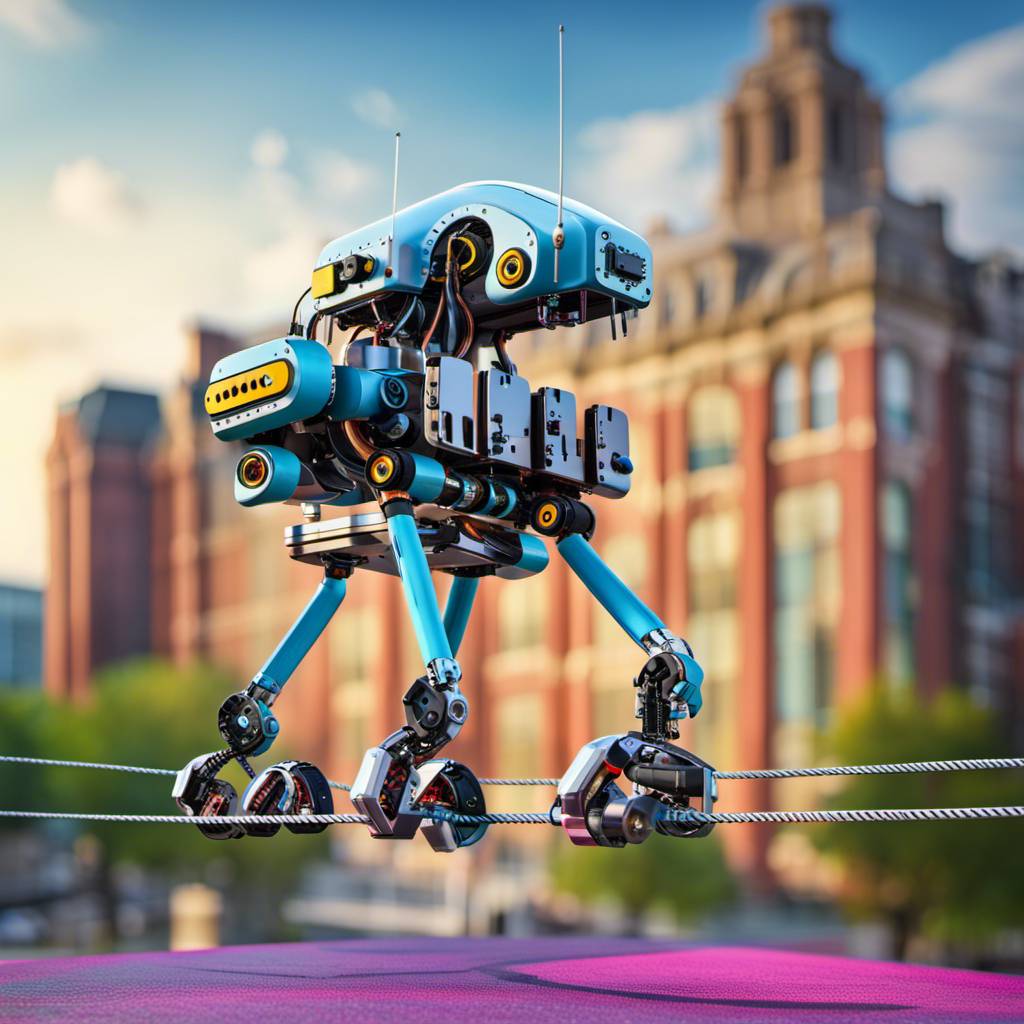In an unprecedented development, the Robotics Institute (RI) at Carnegie Mellon University has engineered a system that enables a standard quadruped robot to maintain balance while walking on a narrow beam. This achievement, which is likely a world-first, was described as “tremendous” by Zachary Manchester, Assistant Professor at the RI and leader of the Robotic Exploration Lab.
Quadruped robots, resembling four-legged creatures, are typically designed with a torso and four legs ending in rounded feet. This allows them to navigate across flat surfaces and even ascend stairs. However, these robots lack the instinctive agility of animals like cheetahs, which use their tails for sharp turns, or cats that adjust their orientation in mid-air using their flexible spines.
Manchester and his team sought to overcome these limitations by integrating technology commonly used in the control of space satellites. This approach enabled them to enhance the robot’s balance, irrespective of the positioning of its feet.
The team’s innovative solution involved the use of a reaction wheel actuator (RWA) system, which was mounted on the back of a quadruped robot. By manipulating the angular momentum of the robot, similar to how RWAs are used for attitude control on satellites in the aerospace industry, the team was able to improve the robot’s balance.
Manchester explained how this technology works: “Imagine a large flywheel with a motor attached. If you spin the heavy flywheel one way, it makes the satellite spin the other way. We applied this concept to the body of a quadruped robot.”
The team put their approach to the test by installing two RWAs on a commercially available Unitree A1 robot. One RWA was placed on the pitch axis and another on the roll axis, enabling control over the robot’s angular momentum. The RWAs provided independent control of the robot’s orientation, regardless of whether its legs were in contact with the ground or not.
The integration of RWAs into the robot’s design was relatively straightforward, as it did not alter the robot’s mass distribution or impose any joint limitations similar to those of a tail or spine. Therefore, the hardware could be modeled like a gyrostat (an idealized model of a spacecraft) and incorporated into a standard model-predictive control algorithm.
The team tested their system extensively and recorded successful results that showcased the robot’s enhanced ability to recover from sudden impacts. In a simulation mimicking the classic falling-cat problem, they dropped the robot upside down from nearly half a meter. The RWAs allowed the robot to adjust its orientation mid-air and land on its feet.
Another experiment demonstrated the robot’s capacity to recover from disturbances and maintain balance while walking along a narrow 6-centimeter-wide balance beam.
Manchester believes that quadruped robots are on the cusp of transitioning from being primarily research platforms in labs to commercially available products, similar to drones about a decade ago. With further advancements in improving their stabilizing capabilities, these robots could be deployed in high-risk scenarios such as search-and-rescue operations in the future.
For those intrigued by electronics and programming languages, this development underscores how coding and computer science can revolutionize robotics. By pushing the boundaries of what is possible, we continue to witness how advancements in these fields can lead to practical solutions for real-world problems.
For more information about this breakthrough, please contact Aaron Aupperlee at 412-268-9068 or via email at This email address is being protected from spambots. You need JavaScript enabled to view it.
